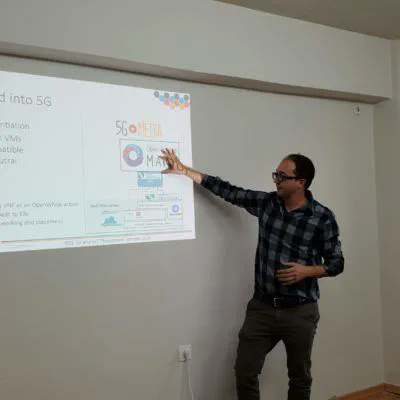Exploring serverless service deployment in 5G for next generation media applications
Oct 22, 2018· ·
0 min read
·
0 min read
Nikolaos Zioulis

Abstract
Tele-Immersive (TI) applications enable real-time, multi-party interaction of users spread around the globe, by placing them inside a virtual world. With the ongoing Virtual Reality revolution, specialized hardware entering the consumer market and significant funds coming to VR related technologies, these next generation communication applications are now starting to emerge and are expected to take the networking world by storm. Quality of Service (QoS) and Quality of Experience (QoE) are top priorities in immersive media whereas availability and interaction between users are considered critical challenges that need to be met as they ensure a smooth user experience. High quality 3D reconstructions of users are created, usually in the form of time-varying meshes (TVM), which produce large volumes of heterogeneous data, thus, creating a challenging networking scenario. Although TVM data can be compressed via static mesh compression or techniques that exploit correlations of the data over time, compression schemes are not yet ready to support real-time applications. The volume of data produced by real-time TI applications is increasing dramatically, imposing limitations on the network transmission of those data, in real time, with current network technologies. As a result, the use of 5G networking technology appears now more than ever, as a necessity for real time TI applications not only in the gaming industry but also in other areas such as advertising or e-health. These have high requirements for (i) very high bandwidth, (ii) ultra-low latency, (iii) ultra-high reliability and (iv) broadband access in high crowd-density areas.
Date
Oct 22, 2018
Event
IEEE 5G and IoT Thessaloniki Summit 2018
Location
Conference Centre of Piraeus Bank
12-14 Katouni street, Thessaloniki, Ladadika area 54625